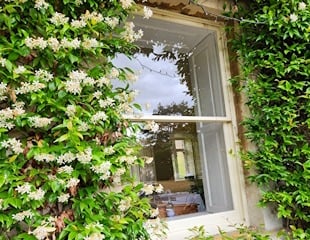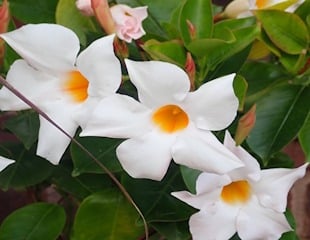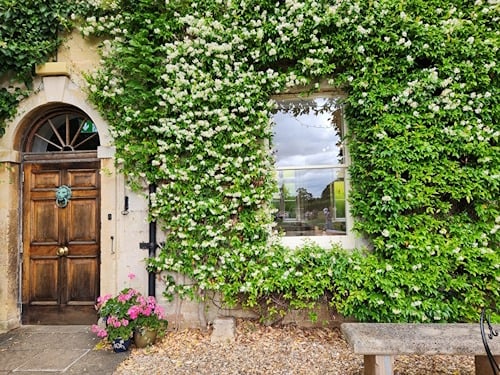


How to Grow Scented Evergreen Star jasmine
Key Facts:
Height: 6-9m, slow growing.
Sun or partial shade is better for the plant than full sun.
Soil: Any, best in slightly acidic soil, free-draining
Special features: excellent scented evergreen, tolerant of partial shade. Easy to grow, hardy in the UK, shelter from cold winds.

I have labelled this a green wheel barrow plant because it is easy to grow and maintenance free.

There are very few flowering evergreen climbing plants, which makes Trachelospermum Jasminoides special, as it also has a wonderful scent.
Star Jasmine is one of the few scented evergreen climbing plants. It is slow-growing but can eventually get to a good size, as shown in the image.
I took this image at Tolethorpe Hall, a lovely open-air theatre near Stamford, Lincs. The Jasmine has grown extensively across the frontage of the building, which will have taken many years and looks spectacular. I could smell the sweet-scented flowers before I reached the building.
Where to plant Star Jasmine and growing tips
Star Jasmine is H4 hardy, which is hardy through most of the UK. Even so, it is best planted in a sheltered spot and in well-drained soil. Like many plants, it is hardy, but it will not tolerate winter wet.
It requires no routine pruning or maintenance. Apart from a tidy up or trim from time to time, this variety of Jasmine requires very little attention.
It's slow to get going, which is why it is important to plant in the right place to start with. A sunny spot with partial shade and protected by a wall or warm fence behind to create shelter. Because it doesn't self-cling, you will need to provide a trellis or wires for it to grow on and tie it in. If you examine the image closely, you can just see lateral wires to support the Trachelospermum Jasminoides.
Considering it is such a trouble free climbing plant, with lovely glossy leaves and scented flowers, I am always surprised it is not grown more widely. Once established, it is reasonably drought-resistant.
